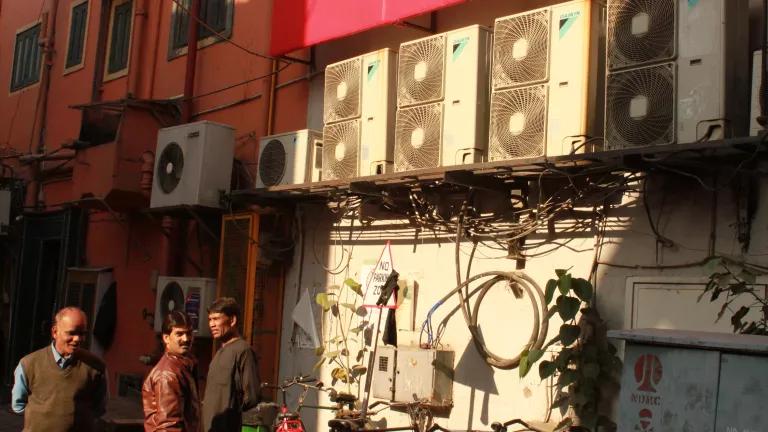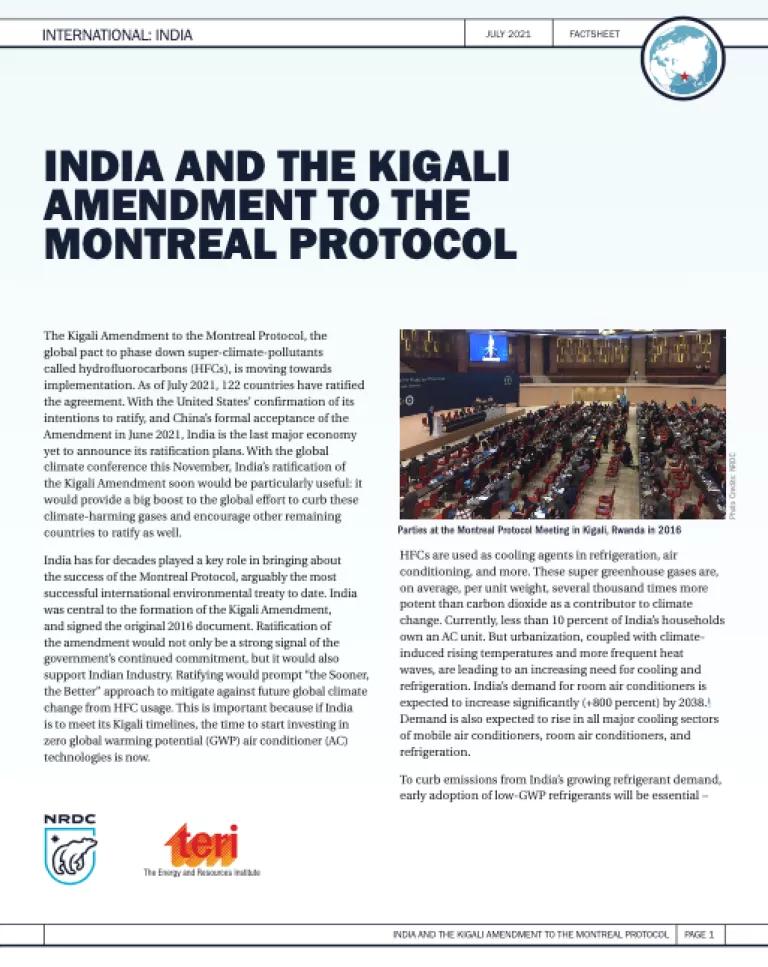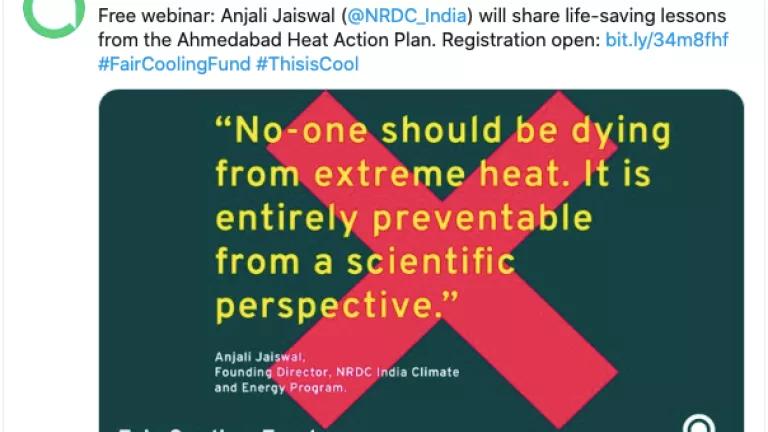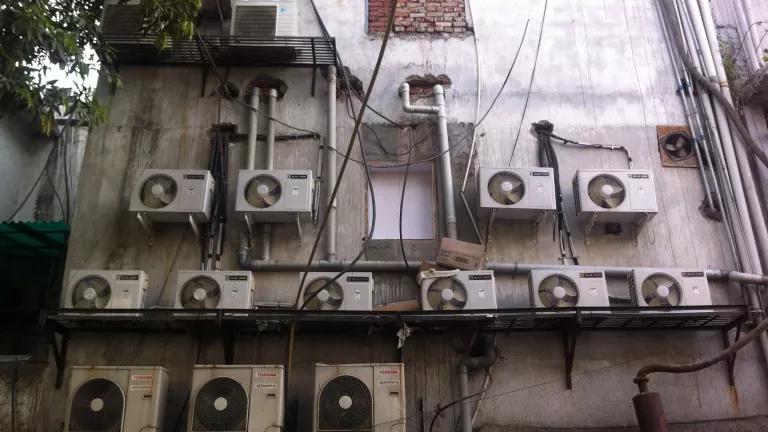All Eyes on India’s Plan for the Kigali Amendment
As parties to the Montreal Protocol are gathering virtually for the second part of the Open-Ended Working Group meeting this week, India is in the spotlight. Although India is already taking action on climate friendly cooling, it is now one of the last major economies yet to indicate its ratification plans for the Kigali Amendment.

Building facades with rows of air conditioners in India
As parties to the Montreal Protocol are gathering virtually for the second part of the Open-Ended Working Group meeting this week, India is in the spotlight. A stream of good news has been coming out recently that the Montreal Protocol’s Kigali Amendment is moving closer to implementation. The global pact would phase down super-climate-pollutants called hydrofluorocarbons (HFCs), refrigerants used primarily for cooling applications. The two leading producers and consumers of HFCs, the United States and China, have announced plans to ratify the Kigali Amendment to the Montreal Protocol. Although India is already taking action on climate friendly cooling, it is now one of the last major economies yet to indicate its ratification plans for the Kigali Amendment.
The Kigali Amendment will have 122 countries as members once China’s ratification becomes effective in September 2021. HFCs are a significant contributor to climate change and can be several thousand times more potent than carbon dioxide. However, if fully implemented, the Kigali Amendment could prevent up to 0.5°C of global warming by the end of this century and achieve a nearly 90% reduction in global warming resulting from unconstrained HFC use.
Focus on HFC Phase-down and Energy Efficiency
At the working group meeting this week, the Montreal Protocol’s Technology and Economic Assessment Panel will share updated information on energy-efficient and low-global-warming-potential technologies. A 2019 report by the same panel showed that low efficiency cooling equipment generally used higher-GWP refrigerants, while equipment using lower-GWP alternatives was generally of higher efficiency. Switching refrigerants presents an opportunity to simultaneously upgrade designs and components to make appliances more energy-efficient. This year’s discussion will provide an update on the latest energy efficient technologies with the objective of encouraging countries to adopt a fast mover status, with ambitious integrated regulation for the hydrochlorofluorocarbons (HCFCs) and HFC phasedown with progressive energy efficiency improvement.
India Stands to Benefit from Ratifying the Kigali Amendment
India has been steadfast in its support of the Montreal Protocol for decades and is expected to be committed to the Kigali Amendment as well. The country stands to gain from ratifying the Amendment soon.
A new factsheet, India and the Kigali Amendment to the Montreal Protocol, by NRDC and partner The Energy and Resources Institute (TERI), summarizes four key reasons for India to ratify the Kigali Amendment:
- To boost India’s domestic manufacturing and employment generation goals. The ratification would signify that India is ready to compete in the market for low-GWP (climate-friendly) refrigerants, which will spur domestic innovation and attract international investments.
- To achieve India’s climate change and cooling commitments. India is one of the few countries on track to meet its climate commitments under the Paris Agreement. Ratifying Kigali would further accelerate this progress.
- To showcase a position of strength at the Montreal Protocol. Ratifying the Kigali Amendment would strengthen India’s influence and goodwill around the globe and help bolster India’s efforts to establish smart policies and bylaws, including energy efficiency while phasing down HFCs.
- To build upon the progress India has made on phasing down HFCs. India has been moving forward with implementing the India Cooling Action Plan, which sets domestic targets for cooling efficiency and refrigerants but may not be enough by itself for India to meet Kigali timelines. Ratification would help lay a clear policy framework to prevent imports that utilize highly potent (high-GWP) HFCs, such as R-134a, R410a, and R-404a.

India's ratification of the Kigali Amendment would send a strong signal to the rest of world about its commitment to the treaty moving forward, encouraging other countries to ratify and signaling that a rapid global market transition is soon to begin.
Read the new NRDC-TERI factsheet here.
Prima Madan is a cooling and efficiency expert working as a consultant with NRDC.





